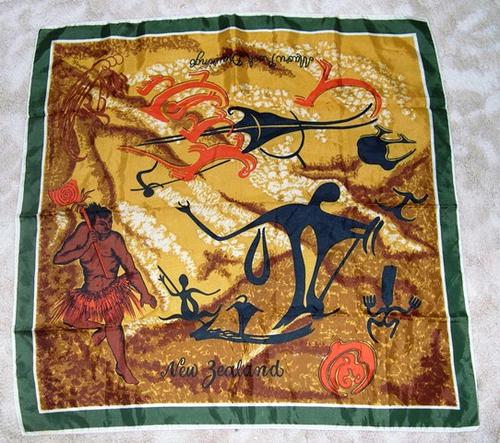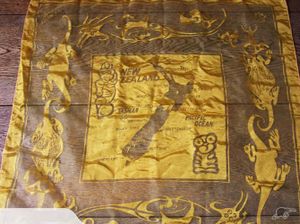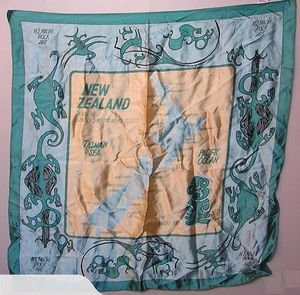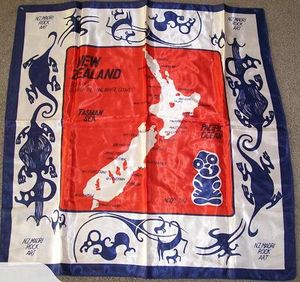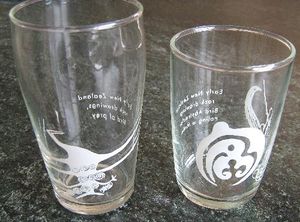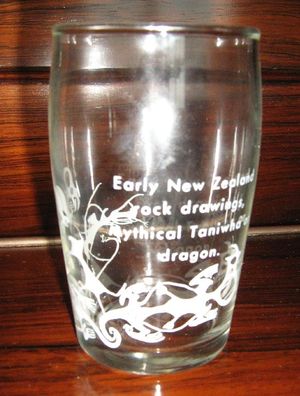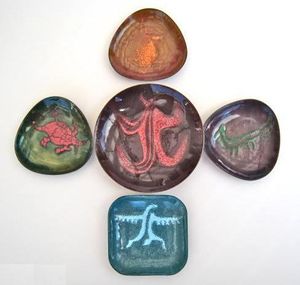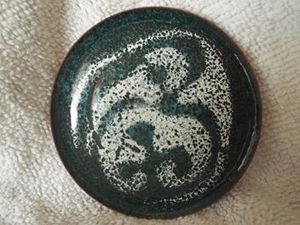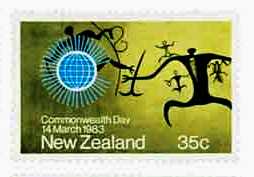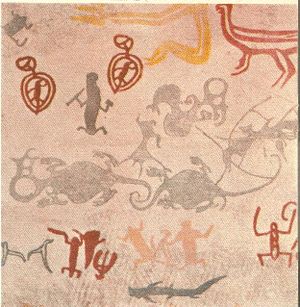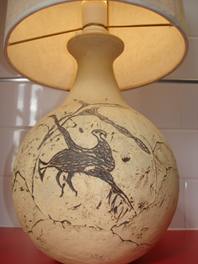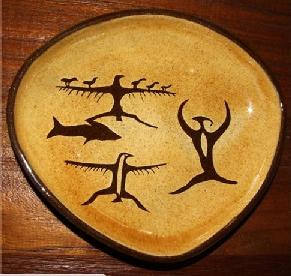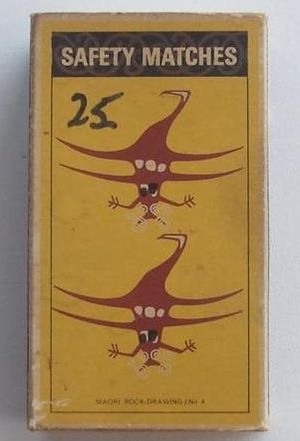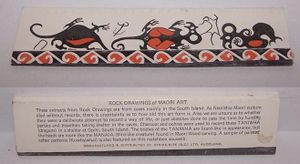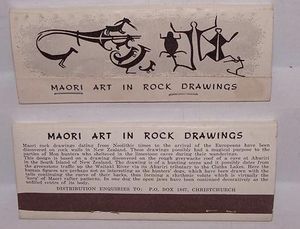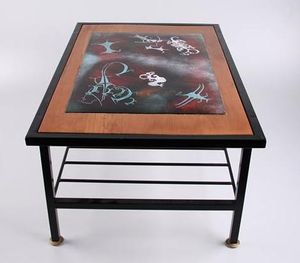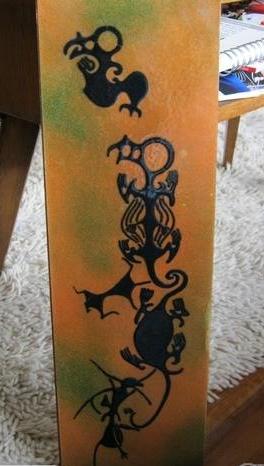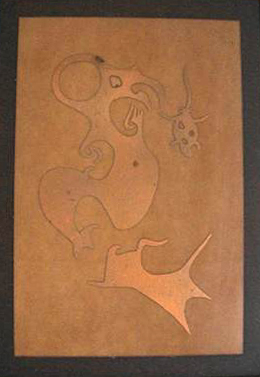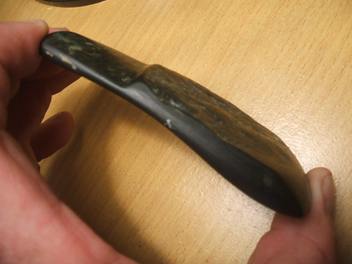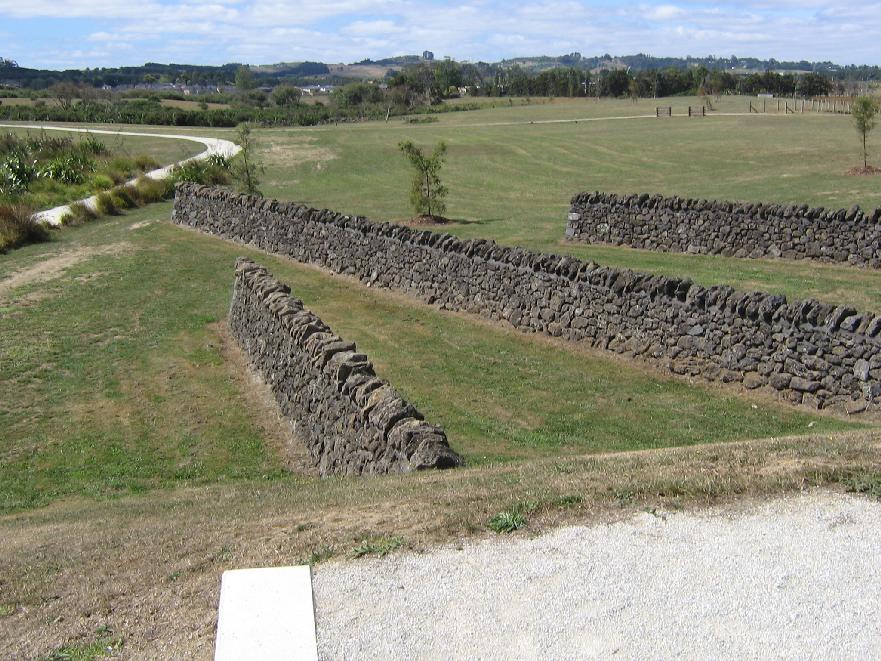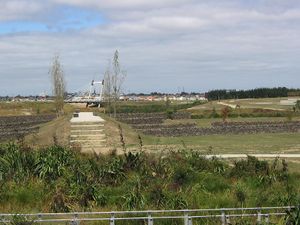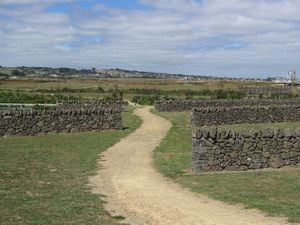Difference between revisions of "Kitsch"
| Line 96: | Line 96: | ||
</table> | </table> | ||
| − | |||
| − | |||
| − | |||
| − | |||
| − | |||
| − | |||
| − | |||
| − | |||
| − | |||
| − | |||
| − | |||
| − | |||
| − | |||
| − | |||
| − | |||
| − | |||
| − | |||
| − | |||
| − | |||
| − | |||
| − | |||
| − | |||
| − | |||
| − | |||
| − | |||
| − | |||
| − | |||
| − | |||
| − | |||
| − | |||
| − | |||
| − | |||
| − | |||
| − | |||
| − | |||
| − | |||
| − | |||
| − | |||
| − | |||
| − | |||
|} | |} | ||
Revision as of 15:16, 8 March 2011
Archaeological Kitsch
Archaeological items of iconic status become the subject of modern copies and re-use of the imagery. New Zealand items are not immune.
Maori Rock Art
|
Rock drawings seem to have been particularly prone to this - borrowings appearing on fabrics, glassware, ceramics,postage stamps and even matchboxes. O'Regan discusses this use in the context of cultural property[1].
|
Maori Other
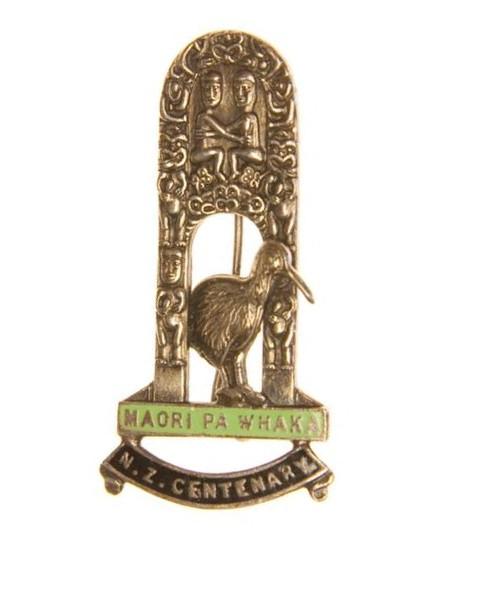 An execrable souvenir of the 1940 Centennial Exhibition. Perhaps not archaeological - a Birmingham made badge representing the Hinemoa and Tutanekai gateway at the Model Pa, Whakarewarewa. It doesn't include a kiwi! This sold for $113.99 on Trademe so it awfullness was certainly appreciated.The gateway itself is an example of bowdlerisation of Maori carving. |
Colonial
|
Barry Curtis Park in South Auckland has volcanic rock walls, reconstructed from a nearby farm site. The unfortunate result is what happens when landscape architecture captures archaeological reconstruction.
|
References
- ↑ O'Regan, G. 2008 The shifting place of Ngai Tahu rock art. in Sue O'Connor, Geoffrey Clark, Foss Leach (Eds), Islands of inquiry : colonisation, seafaring and the archaeology of maritime landscapes. Terra Australis 29 Accessed at http://epress.anu.edu.au/terra_australis/ta29/pdf/ch26.pdf

